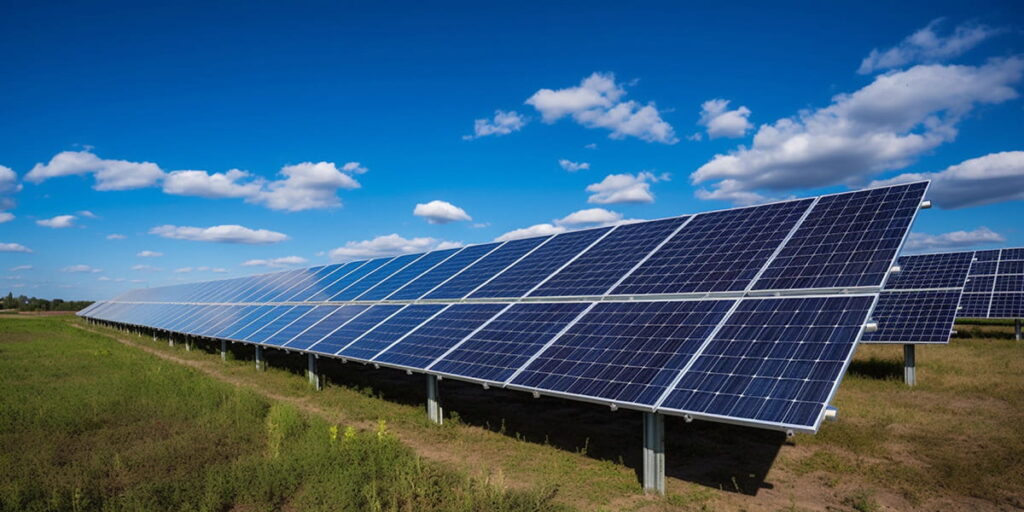The company behind plans for a solar farm north of Beverley has moved to allay concerns raised by a local campaign group.
Enray Power have revealed early proposals for a 40-year ‘temporary’ 40MW solar farm to the north Beverley that could power around 24,000 homes. The plans remain at an early stage with an online public consultation currently ongoing.
But George McManus, spokesperson for the East Riding Against Solar Expansion (ERASE) campaign group, which is active online in vocalising its opposition to such developments in the East Riding of Yorkshire, raised a number of concerns with the proposals for Molescroft Solar Farm.
Mr McManus explained that is it too early at this stage to officially oppose the proposals, mainly due to the lack of detail, he said. But he added that the group has a variety of concerns including the “rushed” timing of the proposals. Mr McManus claimed it is an “absolute scandal” that there was just one four-hour in-person public consultation, taking place only days after the proposals were revealed.
He added: “We have a whole myriad of concerns that I don’t think will be addressed by one pop up meeting. It’s almost tokenism, it’s almost as though like they’re ticking boxes with these exercises.”
ERASE’s concerns also include the associated infrastructure such as “lorry movements, noise, and the disruption that’s going to be caused,” as well as the environmental impact they believe the solar farm could have on the land. Mr McManus said: “There’s also the aspect that solar farms are incredibly destructive to agricultural land because they involve concrete piles and the putting up of steel structures and the destruction of habitats.”
However, Enray Power has addressed each concern as follows:
The one in-person consultation event, so soon after the plans were announced
We appreciate that people want time to consider the proposals, which is why the consultation period is running until 4 August. The in-person event was scheduled early to ensure the community could learn about the plans in detail ahead of the summer holiday period, and ask questions face to face as soon as possible. However, we welcome feedback at any point during the consultation, and details on the project are available online or in print on request.
Long-term impact on the land following the 40 years, such as with the potential use of concrete structures
The land will remain in agricultural use throughout its lifetime via grazing of livestock, a practice which Molescroft Farm Estate already has experience of, and the land will return to full agricultural use following decommissioning. The solar farm is designed to be reversible, with panels mounted on frames that are piled rather than laid on extensive concrete bases. The limited use of concrete will be removed at the end of the project. This ensures the long-term integrity and future flexibility of the land for future generations.
Associated impacts such as increased vehicles on surrounding roads
The site will be accessed from an existing junction off the A1035. The greatest vehicle activity will occur during the short construction phase, which will be carefully planned to minimise disruption. Construction traffic will be managed through a dedicated traffic management plan agreed with the highway authority to ensure safety and reduce inconvenience. Once operational, the site requires very little maintenance so there will only be occasional vehicle visits, typically by small vans, resulting in limited additional traffic, unlike other development on greenfield land such as housing.
Loss of agricultural land
The solar farm will be sited on land that Molescroft Farm Estate has found increasingly difficult to farm productively, due to pervasive herbicide-resistant weeds and flooding. Rather than intensifying chemical treatments, which is not in line with the regenerative farming ethos the Estate employ, the solar farm offers a more sustainable use of the land. The land will be rested from arable farming and sown to create a species-rich meadow habitat, helping address the blackgrass, while still supporting agriculture as sheep grazing will continue between the panels. This approach maintains soil health, avoids chemical use and preserves the productivity of the land throughout the life of the project.
Noise levels
Solar farms are very quiet during operation – quieter than the A1035 and railway line adjacent to the site. The main sources of noise are inverters and transformers, which produce a low hum that is typically inaudible beyond the site boundary. A detailed noise assessment will be undertaken as part of the planning application to ensure there are no unacceptable impacts on neighbours or local wildlife. Construction noise will be temporary and controlled through best practice measures as agreed with the local authority.”
By: Andrew Spence, LDRS






















